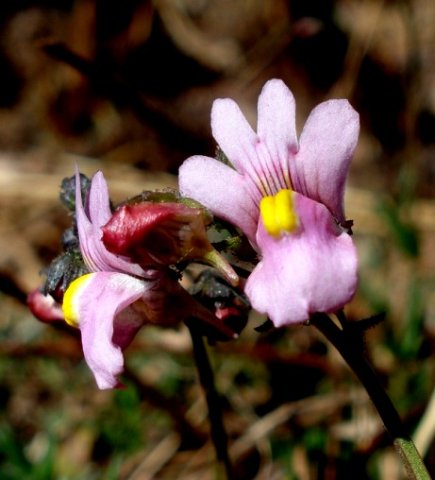Nemesia fruticans flowers, buds and fruit

Author: Ivan Lätti
Photographer: Judd Kirkel Welwitch
Nemesia fruticans, the common wild nemesia or in Afrikaans the wilde leeubekkie (little wild lion mouth), was at one stage described as perennial herb and also as a shrublet. That debate has now settled on shrublet.
There is a fine line, or more appropriately a grey area between herbs and shrubs as with many biological border areas separating species or other categories of definition. This plant was close to the border, the matter considered until clarity arrived. Such clarity may come from more information or from clearer definition of the humanmade categories. Artificial human categories to facilitate learning, useful as they may be, mean nothing in plant world free from people, and are not respected by the natural diversification processes in the continuous evolution of species. Border areas tend to vanish when speciation drivers become more pronounced, and unpopulated when no further offspring arrives from borderline plants.
The two-lipped flowers of N. fruticans may be pink, lilac, mauve or white. The upper lip has four oblong lobes with rounded tips, resembling short fat fingers. There are dark, narrow, vertical lines from the base of the upper lip. The lower, two-lobed lip has bright yellow markings at the base on two oblong mounds. This lip has an irregularly rounded margin that may be partly curved under. The almost cylindrical spur at the back of the flower points obliquely downwards and tapers slightly towards its tip. It becomes about 4 mm long.
Flowering happens in spring but also after rain in other seasons.
The fruit capsule that follows a successful flower is laterally compressed and two-chambered (Euston-Brown and Kruger, 2023; Manning, 2009; Van Wyk and Malan, 1997; iNaturalist).

